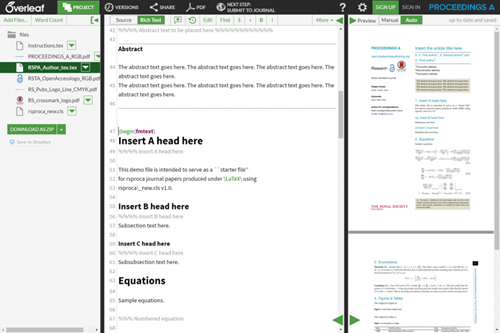"one of the easiest ways to write and submit your manuscript to hundreds of different journals, Proceedings A included"

John Hammersley is the co-founder and CEO of Overleaf. We asked him to describe how Overleaf works, and what benefits authors of Proceedings A can expect from the service.
Earlier this year Overleaf launched a new service in partnership with the Royal Society – provision of the Proceedings A LaTeX template on Overleaf with a custom submission link, to make it easier for authors to write and submit their manuscripts to Proceedings A using LaTeX.
What is Overleaf? It started out as writeLaTeX, a convenient way to create and share LaTeX documents with collaborators based in labs and universities around the world. Because it’s cloud-based, there’s nothing to install, and it’s since become one of the easiest ways to write and submit your manuscript to hundreds of different journals, Proceedings A included.
You simply create a new project on Overleaf using the Proceedings A template, write your manuscript with your co-authors (we use the same tech as Google docs for the collaborative part, so your changes are merged in real-time as you type), and submit to the journal when you’re done. Because we’re based on LaTeX, you can include any mathematics you need to, and the typesetting is done automatically in the background as you write.

We also have integrations with reference managers such as Zotero and Mendeley for easy reference management, with Git for offline working, and if you’re doing a lot of data visualization you might like our integration with Plot.ly for your graphs and charts.
We now have over 500,000 authors using Overleaf around the world, ranging from middle-school students to finance professors. Visit www.overleaf.com to find out more, check out our short tutorial video, or dive straight into the Proceedings A LaTeX template if you’re ready to start writing!
